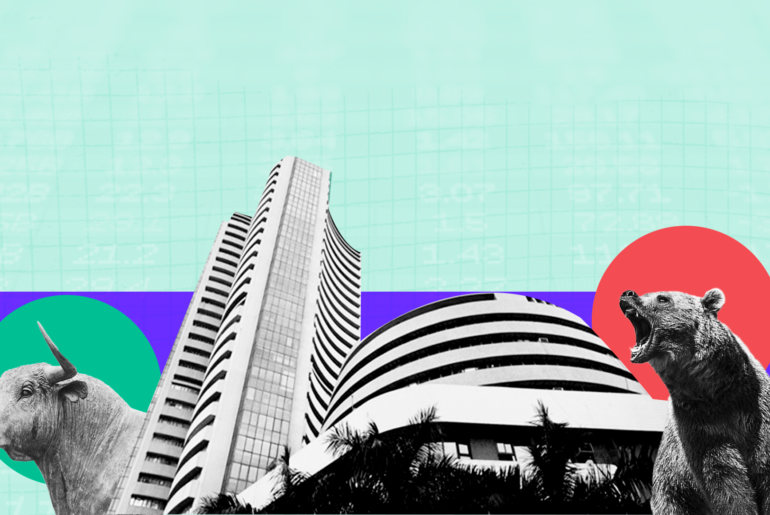Last Updated on Oct 28, 2021 by Aradhana Gotur
After 2017, this would be one good Diwali for investors where one would be able to look at a good investment return.
Muhurat Trading is now more than a 100-yr-old tradition that has been followed with a lot of fervour and enthusiasm in the Indian investor community.
Let us look at some of the traditions around Diwali Muhurat Trading and how we can look at it in an individual context in the current environment.
Table of Contents
Muhurat day buying for long term
A lot of old-time investors tend to buy some quantities of their favourite companies or anything they would for the long-term horizons of at least till next Diwali.
Over the years holding periods of investors/traders have only gone down. As the time frame gets shorter the skillset/temperament required keeps getting higher. In the long term in a growing economy, you can just end up being plain lucky by owning a few multi-baggers. But how can you get lucky every month, every week, every hour?
Over the years holding periods of investors/traders have only gone down. As the time frame gets shorter, the skillset/temperament required keeps getting higher. Click To TweetWhat to do in the current world?
- Start thinking in terms of multiple Diwalis instead of monthly expiries and shorter-term holding periods.
- Start thinking about how you would add new Lakshmi (cash) to the portfolio instead of focusing on an incremental 1-2% CAGR.
Chopda Poojan
The trading community performs pooja on account books, safes, and Tijoris on Dhanteras as well as on Diwali.
In today’s world, the Computer/Laptop and other devices have taken the place of books. Now is the time you do a cleanup/upgrade of your devices. Earlier the trading used to happen on a trading floor and there was no chair. Even today the chairs most traders/investors are the cheapest/oldest compared to every other device. A good ergonomic chair that suits your body can do wonders for your working hours and relieve you a lot of pain.
- Go ahead, clean up your computers/laptops not just from the outside but even clean out the memory.
- Go ahead and revamp your investing/trading desk. Go for an ergonomic chair and mouse, which helps you in small ways today but will do wonders in the long run.
Asset Allocation, Timing, and New Rules
The simplest strategy on paper is Buy and Hold and looks great in hindsight after a bull market but at the bottom of the Bear Market looks the worst.
I would blame the below statement taken literally.
Time in the Market is More Important than Timing the Market.
Theoretically Timing the Market Tops and Bottoms would imply one would Sell 100% of Equity exposure and then Buy 100% of Exposure. This is extremely difficult to be right on and if you do not have exposure to equity in 2020 or 2008 you have missed the bus forever.
This is what scares investors but the fact is I haven’t met anyone who even tries to go from 100% Equity to 100% Cash. I am yet to meet many traders who have Zero Positions for the long term so how do you expect an investor to go from 0% equity to 100% Equity.
As an investor one needs to focus on when to increase Cash by 5-10-20-30% or when to increase Equity or Scale-up Equity Exposure by 5-10-20-30%. Or simply put thumb rules for asset allocation.
There is a lot of work and that’s why the industry loves to write – Do Not Time the Market!!
Let’s take an example of how being Totally Wrong can hurt the CAGR
Going back to Diwali 20 yrs, the Nifty was around 1000 odd levels.
So in 20 yrs, the Index has gone 18x which just looks amazing. Add dividends and you are easily above 20x in 20 yrs. Now that’s a cool 15-16% CAGR.
If we go a year back to the top of the IT Y2K boom of 1999-2000, which was around 1700-1800. The CAGR drops to 12%, which does not look great given the FD rates were 8-9% then.
Same way if one bought in November 2007 at 5600 the CAGR drops to sub 9% even after 14 yrs.
So what one really needs is an Asset Allocation Strategy that increases Equity in Bad Times and Cash in Good Times.
So cleanse your investment Philosophy of Buy and Hold with a tinge of Asset Allocation, Timing, and New Thumb Rules.
Why do you need to keep reworking your investment/trading strategies is to make your Equity more Linear compared to the Index Equity Curve?
Cleanse your investment Philosophy of Buy and Hold with a tinge of Asset Allocation, Timing, and New Thumb Rules. Click To TweetIt’s Never Linear but Extremely Lumpy
The Diwali-to-Diwali Return Year by Year
| Year | Date | Nifty Close | Return % |
| 2001 | 14-Nov | 1015 | |
| 2002 | 04-Nov | 962 | -5% |
| 2003 | 25-Oct | 1521 | 58% |
| 2004 | 12-Nov | 1872 | 23% |
| 2005 | 01-Nov | 2389 | 28% |
| 2006 | 21-Oct | 3683 | 54% |
| 2007 | 09-Nov | 5663 | 54% |
| 2008 | 28-Oct | 2526 | -55% |
| 2009 | 17-Oct | 5062 | 100% |
| 2010 | 05-Nov | 6312 | 25% |
| 2011 | 26-Oct | 5201 | -18% |
| 2012 | 13-Nov | 5666 | 9% |
| 2013 | 03-Nov | 6317 | 11% |
| 2014 | 23-Oct | 8014 | 27% |
| 2015 | 11-Nov | 7825 | -2% |
| 2016 | 30-Oct | 8625 | 10% |
| 2017 | 19-Oct | 10146 | 18% |
| 2018 | 07-Nov | 10598 | 4% |
| 2019 | 27-Oct | 11627 | 10% |
| 2020 | 14-Nov | 12780 | 10% |
| 2021 | CMP | 18100 | 42% |
The Total CAGR is 15.5% but there is not a single year where the returns are 15%. It clearly shows how lumpy returns can be.
Conclusion
- One of the major learnings from History is after a Bad Event the chances of an event of a similar scale only reduce.
- After a Pandemic, Global Crisis, Bank Failures, and various events in the next few years can continue to surprise you pleasantly.
- Let’s hope history rhymes going forward.
- Diwali is a festival of lights and hopefully, we are getting into multi-years of Brightness in Indian Equities.
You can check out Nooresh Merani smallcases here.
- Muhurat Trading – Then and Now - Oct 28, 2021
- Bull Market: Identifying Stocks and Riding the Trend - Oct 4, 2021




